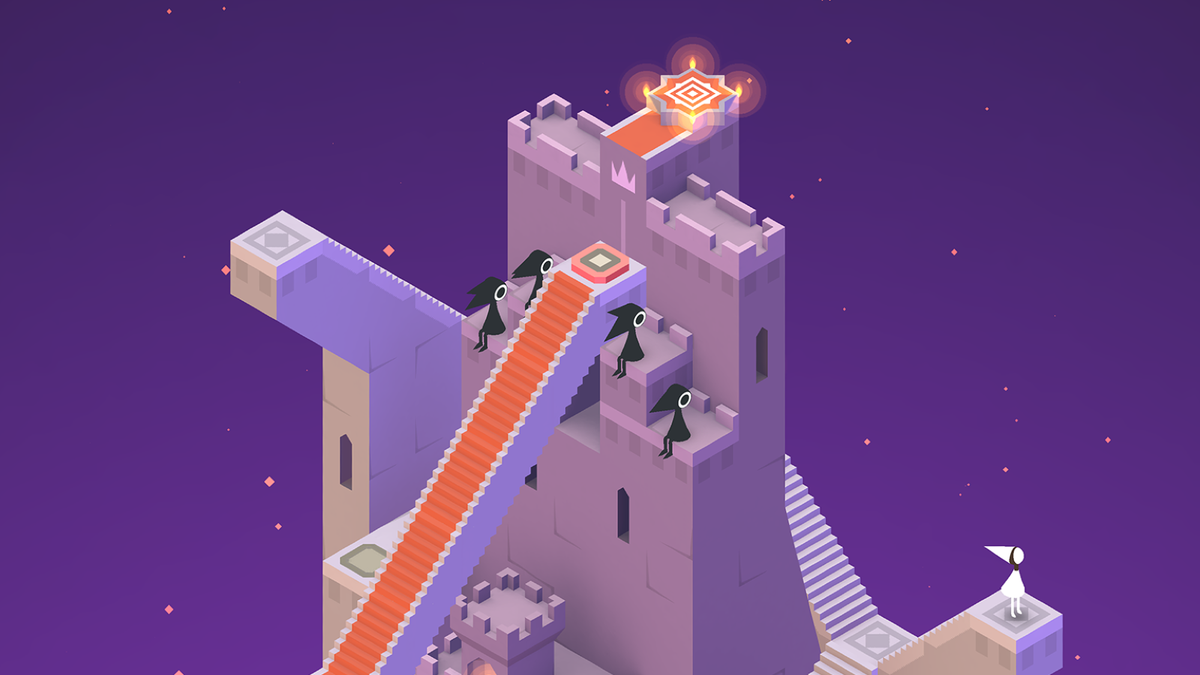
I’m a bit of a puzzle game veteran at this point, having reviewed quite a few for GamingTrend despite never being interested in them initially. Puzzle games have that stigma that they are old people games – think Nancy Drew, etc. – and don’t really get your heart pumping with adrenaline like the average video game does. But taking the time to explore this multi-faceted genre has been a delight, and now I’m able to explore Monument Valley; a classic that’s been seeing installments since 2014 and up until last year. Its brief playtime is to be cherished and I chose to take my time with both games, which made for a memorable and fun experience.
Monument Valley
In Monument Valley, you play as Ida, a misplaced princess who looks to answer for the crimes of her and her people as they are confined to the Monuments left behind by the lost human race. The story of Monument Valley requires interpretation from the player, rather than laying it all out in loads of dialogue to read. Each level provides a little snippet of text in its opening card, but Ida’s redemption story is largely gauged from symbolism and the elusive presence of a ghost. It’s a simple story that pairs well with what the game is going for, a kind of simple beauty found in its bold pastel colors and towering monuments.
As a puzzle game, it’s separated into short levels where the player must guide Ida around Monuments and solve its Isometric puzzles. In the base game, it does a good job of easing players into how perspective changes the building around you. My brain whirred every time I was caught at a dead end, only to spin the Monument around to link it with another path. It’s hard to communicate how satisfying it is to see without doing it yourself.
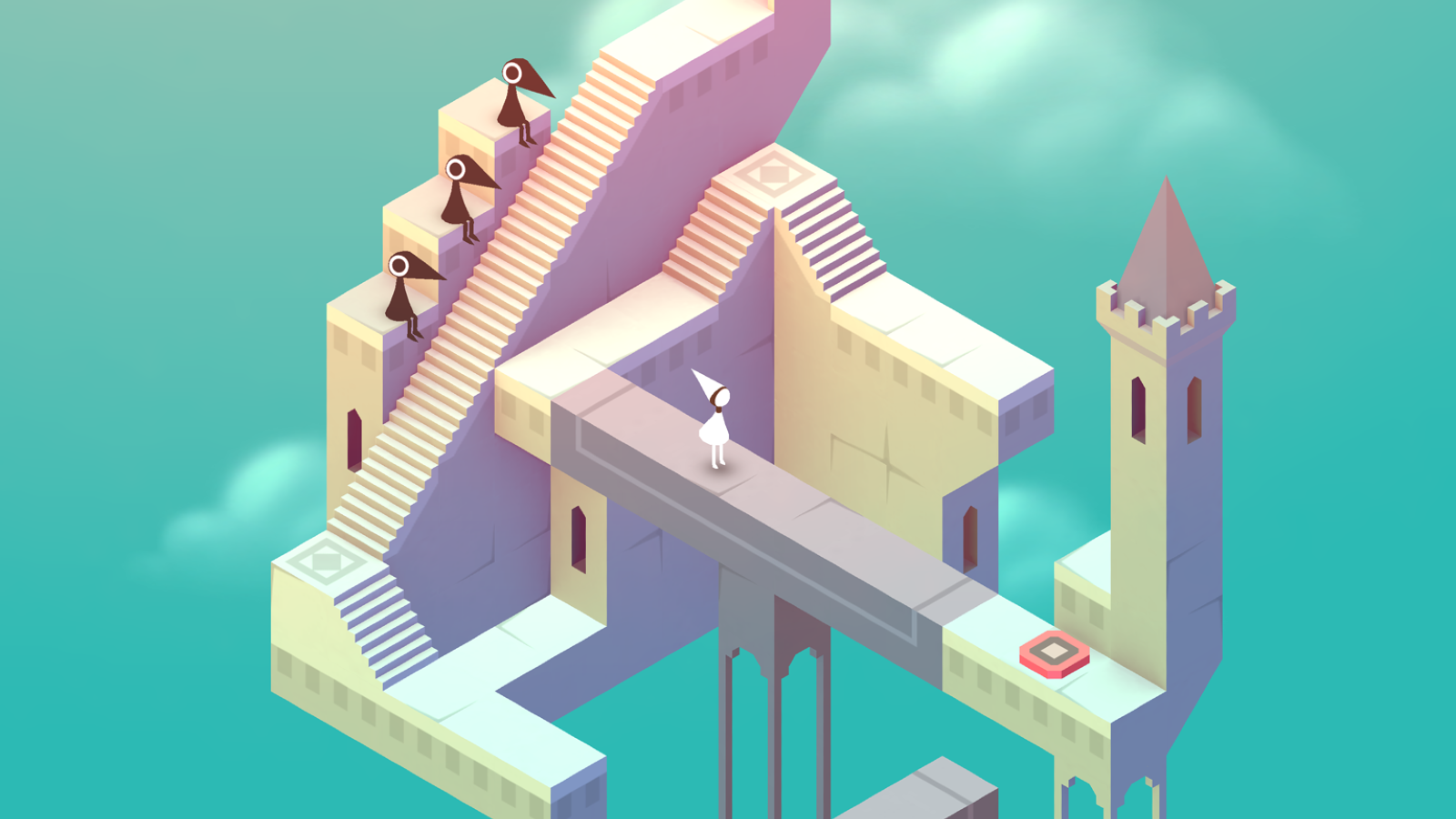
The base game is separated into 10 levels with a consistent level of difficulty. Monument Valley isn’t made to wrack your brains, but to guide you through its beautiful world. Each level can be split into two to three Monuments and offers a couple of interesting mechanics, mainly the presence of your friend, Totem, in some of the levels. Totem consists of 4 stacked blocks and can be shuffled around flat surfaces for Ida to ride on top of so she can reach the other side of a level. You also meet the crow people, cute little guys that have an annoying feature of getting in your way and cawing at you. In the base game they were more of a hassle than a fun feature as their gameplay mainly featured navigating Ida around them to reach the other side. They only show up in one or two levels though so they can be forgiven, for now.
At the end of Monument Valley’s main campaign, I felt satisfied with my puzzling but also felt like there could have been a lot more on offer. The set pieces were pretty enough but I was left wanting more. These harsh criticisms only really came to light when I moved onto Monument Valley’s expansion pack, Forgotten Shores. Which gave me everything I wanted from this type of game.

Forgotten Shores provides Monument Valley with 8 more levels to explore, which boast variety in gameplay and some gorgeous set pieces to traverse. Right from the first level, Monument Valley’s structure felt different and more integrated into a world. From descending the torch lit Chasm to ascending the grandiose Lost Falls, the environments are stunning. The gameplay is also much more diverse, with the use of water to elevate platforms, a rotating box that changes with every face you look at, and a misty night where you track down the thief of Ida’s hat. I blasted through these levels with so much joy that it left me wanting more. I also saw a step up in difficulty in some aspects, especially with the levels that featured a lot of ground to cover and usage of rotation and reflections. If you felt a bit ‘meh’ by the end of Monument Valley’s first campaign, then I implore you to dive straight into Forgotten Shore.
Finally and briefly is the sole level of Ida's dream, a Monument that holds 7 mini puzzles to complete. These challenges were brief and made me scratch my head a little bit but overall wasn’t anything amazing. This miniature expansion was done as a charity event with all proceedings going to RED, a charity working to stop AIDS. It’s such a breath of fresh air to see developers work alongside charities like this and shows the heart put into Monument Valley, and of course it’s always nice to have more games to play, but Forgotten Shores is the campaign that definitely stands out here.

Forgotten Shores was originally priced at $1.99 in its initial release, but in the Panoramic edition, all expansions and added content come pre-installed. With this in mind, I’m glad I waited until now to play Monument Valley as a complete package, as its three campaigns feel more like a completed game when they’re all brought together. Monument Valley still only takes a couple of hours to complete, but is fun and pleasant enough to give a chance to.
One thing I will complain about though - and I kind of knew would be a problem going into this Nintendo Switch port – is the cursor and controls. Monument Valley was originally released on iOS and later on Android and Windows. You can tell that this game works perfectly with touch screen controls, with guiding Ida and twisting Monuments around being a click and point or dragging motion on Switch. The transition to console is responsive and works well, but the cursor does stutter when you try to choose where to guide Ida. When the puzzle ain’t puzzling and you’re getting frustrated, the cursor can be your number one enemy, but it wasn’t a travesty in the long run, more an occasional annoyance.
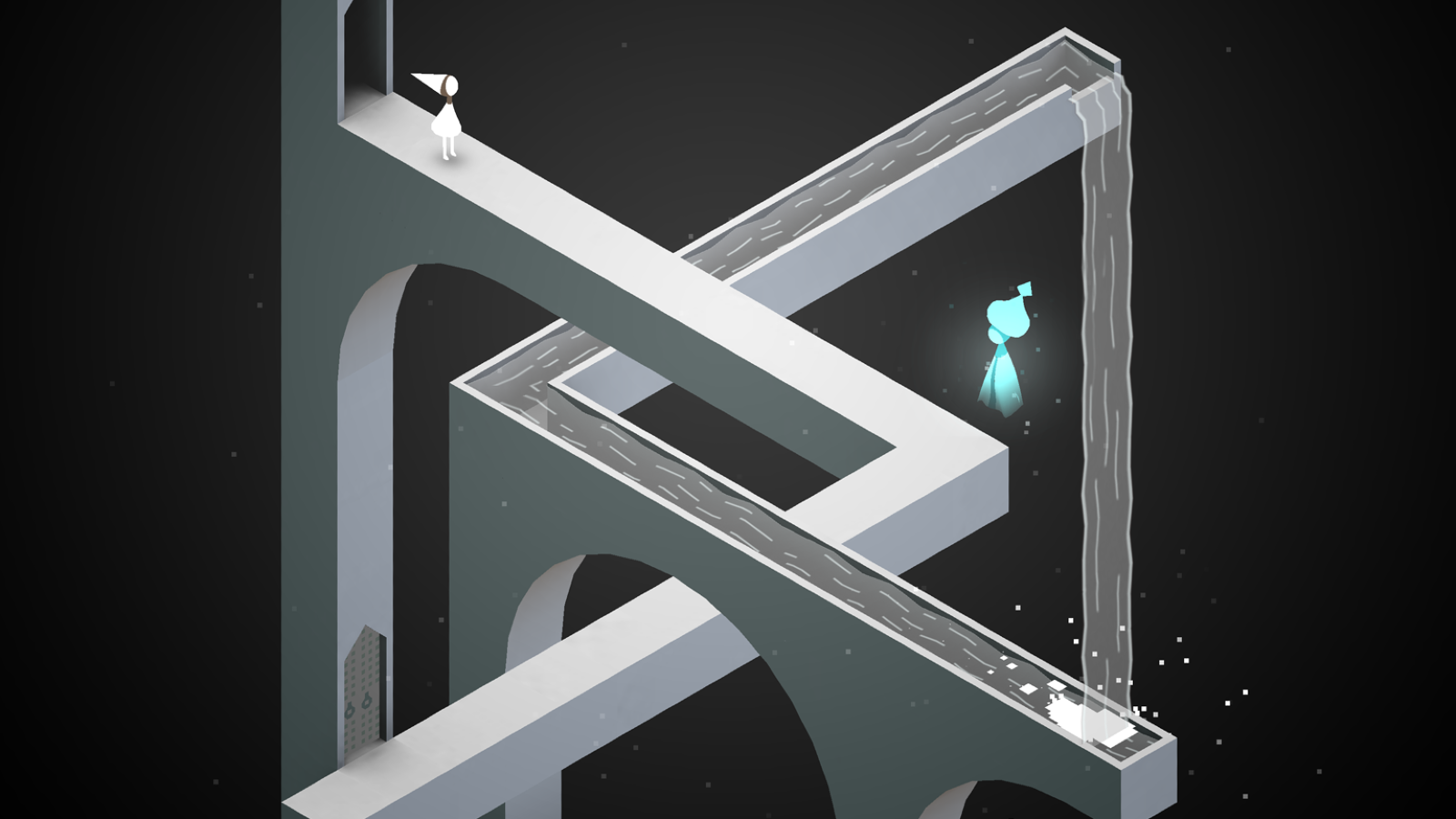
Monument Valley II
Moving on to Monument Valley II, I actually felt excited to begin due to the fun I had with the first, my main interest being piqued by the promise of new gameplay features. I definitely wasn’t disappointed due to the introduction of dual protagonists, Ro and her nameless daughter. It's not noticeable right off the bat, but Monument Valley II is a prequel, telling of a time where humans built the monuments and created the sacred geometry. Like its predecessor, the story is up to interpretation, but I found this instalment to be much easier to understand and possessed more of a directed narrative, as it comes in the form of a tale that most people are familiar with, growing up and leaving home.
The narrative structure was seamless and shook things up a bit with Monument Valley’s formula, having the player begin with just using Ro, then using both protagonists, to then witnessing them parting ways on their own adventures. The first few levels are relatively simple, easing the player into its isosteric puzzling but as you progress, you get introduced to its unique gameplay mechanics. In earlier puzzles you control Ro and her daughter like they are mirrored, navigating both through different halves of the puzzles to reunite at the end, with the front cover emphasizing this duo, I hoped the game would be based around balancing playing both characters, which I was treated to in late game levels.
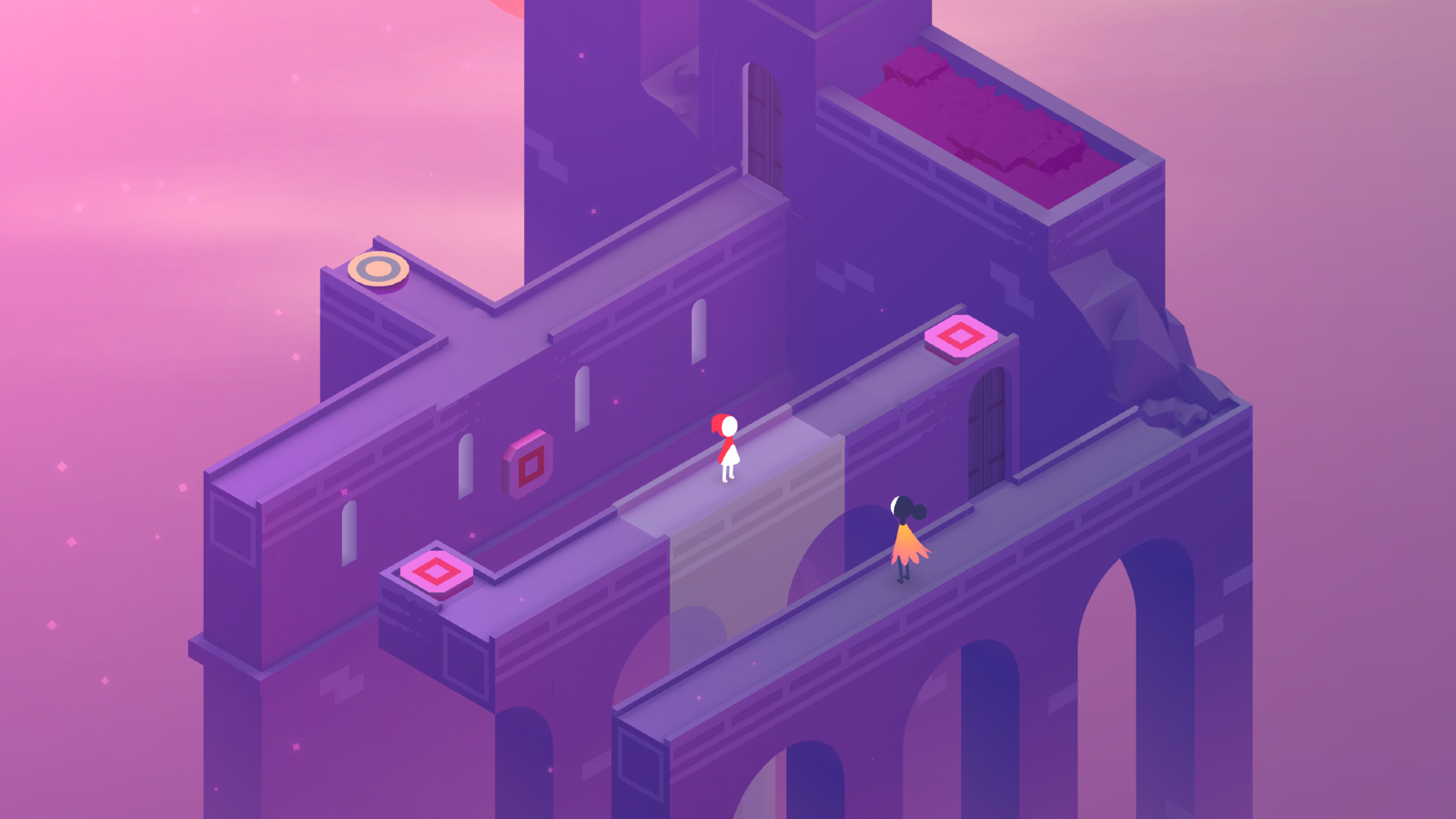
Once you get to the midway point of the game, you can really see how Monument Valley II wants you to feel connected to the narrative with how Ro learns that she must let go of her daughter and let her embark on her own path. It’s a simple and brief level that only serves to pack a punch, which was a nice touch. Monument Valley II has more emphasis on these story beats, with touching moments that let the player just witness the story. It's after this level that things begin to ramp up, in level design and gameplay. Playing as Ro, you navigate Russian doll-esque levels and the return of an old friend, who has their own twist to its existing gameplay mechanic that made its levels more interesting. Sadly this was only a brief encounter, but a nice callback nonetheless.
What absolutely stood out to me, however, were the daughter’s levels, with a standout being the ‘transformation’ chapter where the daughter must shift light to alter the growth of trees, which then offer platforms for the daughter to climb on. She also has other levels that boast interesting mechanics, my only complaint was that we didn’t spend enough time with them. By the time I was getting into the groove of playing Monument Valley, it came to an abrupt end, always wanting more. This is to its merit with how fun its gameplay and world is, but I don’t think I’ll ever stop wanting more levels.
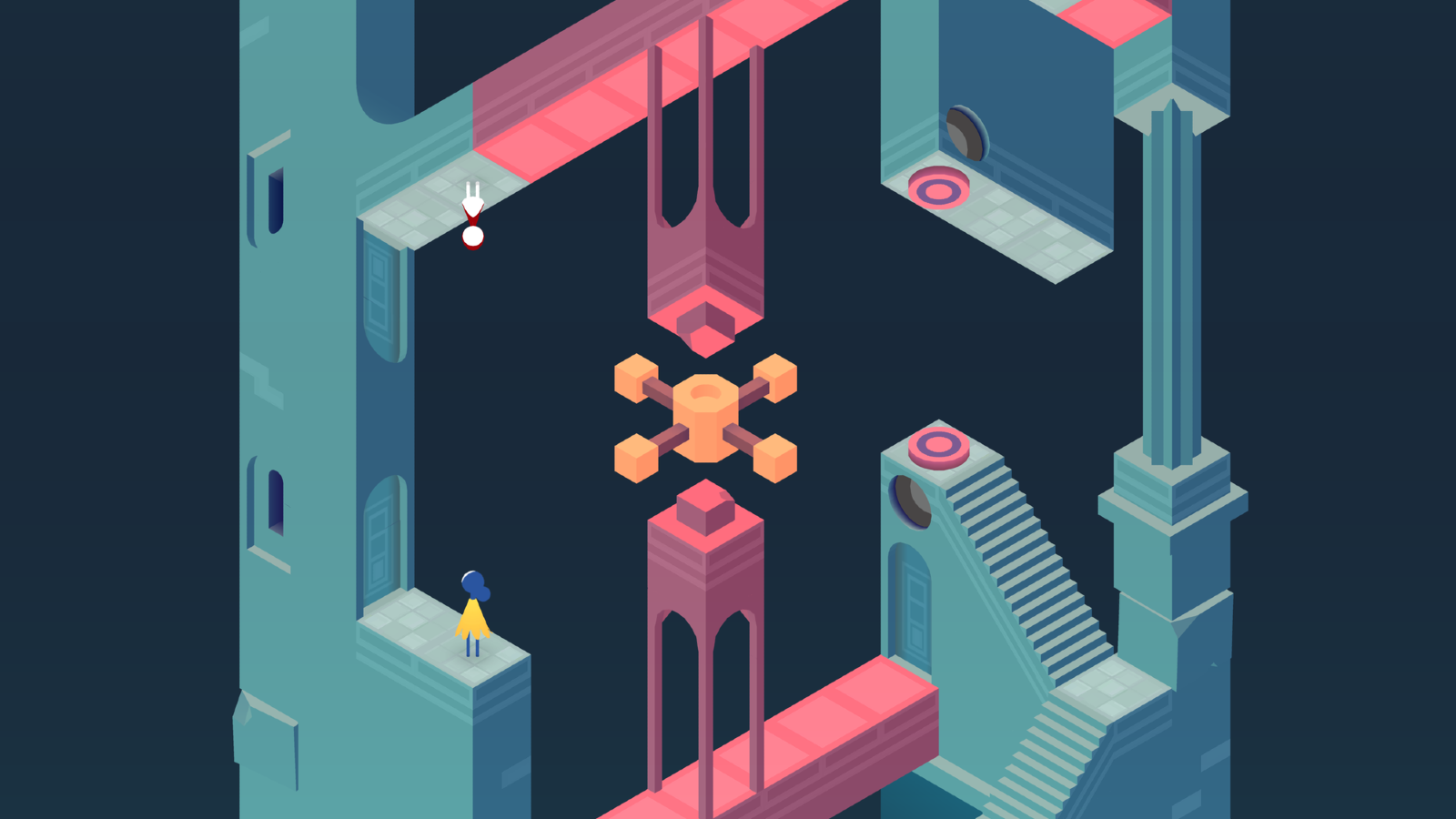
Monument Valley’s strength is how perspective puzzling doesn’t get old very quickly, with how many options there are to play with. Both games showcase this amazingly, with fresh ideas being pumped out all the time. This is matched with consistent and gorgeous level design, but I won’t go into much detail about this aspect as it’s very similar to its predecessor’s, just trust me, it’s still breathtaking.
The main campaign is separated into 14 chapters, a few more than in Monument Valley I’s, and also comes with its own bonus content: The Lost Forest. This was another expansion that was dedicated to a good cause, a nice tradition for an Indie game to provide for its players. It contained one level that centered on a forest, with messaging urging players to sign Play4Forests’ petition and to support forest conservation. I’m not sure if it was intentional, but this cause seamlessly fitted in with the game’s focus on landscape, and acted as a companion to the man-made monuments the humans try to preserve. To protect our structures is to also protect the landscape we build them upon. This was only a brief puzzle, the length of a typical level, but was nice enough to have as a tag on the end of the main game.
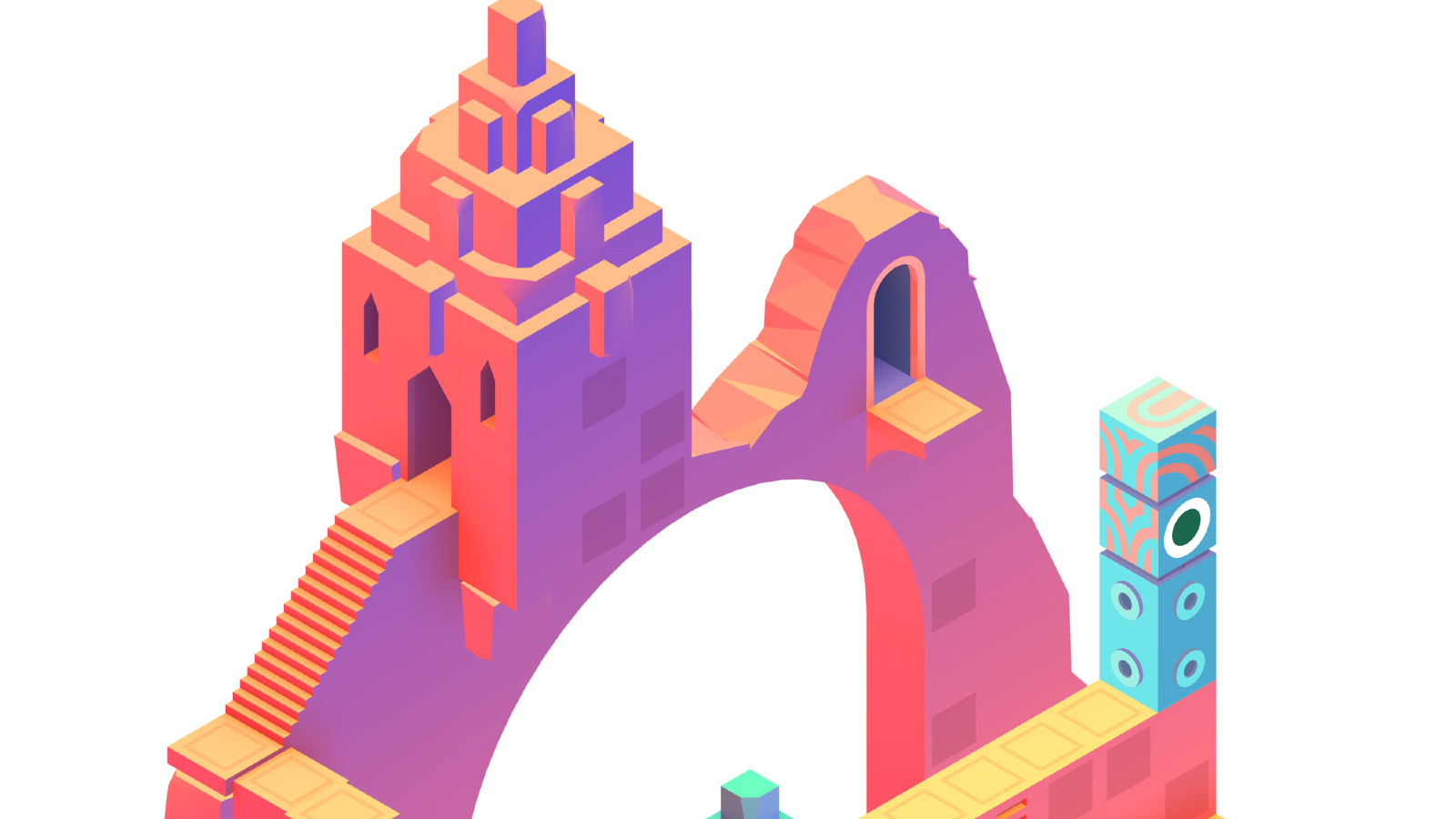
The only complaint I have was the same I had with the first game, but in some levels was even worse, the Switch cursor you used to spin wheels, raise platforms and guide your characters. In late game, the levels can be quite compact with a bunch of wheels to turn, trying to click on the right wheel and mistakenly spinning a platform out of place was really annoying. Looking back on both instalments, they are fun and more than fine to play on Switch, but if you’re looking for seamless gameplay, you may want to turn to mobile.
Last and sadly least of my surprises was the photo mode that can be found in both titles. It’s fine. At the end of each level before you progress on to the next, you can activate photo mode where you can do the basics, like zoom in and out and snap a picture. This photo mode isn’t meant to be customizable and fun to play with, but rather to snap a picture of art. Monument Valley’s design and some of its end of level shots are beautiful to behold, don’t get me wrong, but I was never bothered to do anything with it, I just pressed the screenshot button on my Joycon.
Monument Valley: Panoramic Edition
Great
It’s hard to decide whether to spend your money on brief 2 hour experiences that you’ll complete in one session, but Monument Valley’s puzzling, story, visuals and generous price point accumulate together to bring players an intriguing and memorable experience. It’s a shame we didn’t get its third instalment in this bundle, but if you’re looking for top notch puzzling, then this is a must play classic.
Pros
- Both stories are intriguing and up for interpretation
- Innovative puzzling that revamps the formula with each level
- Visuals and soundtrack to create a strong personality
- Generous price
Cons
- Missed opportunity not to include Monument Valley III so it could be a complete bundle
- Cursor controls can be annoying
This review is based on a retail Nintendo Switch copy provided by the publisher.
